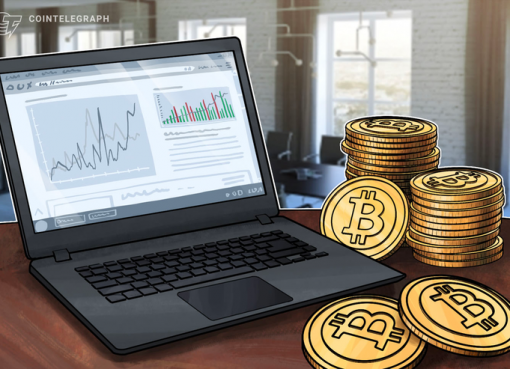Tracing the journey of cryptocurrencies from 1990s experiments to a multi-trillion dollar industry.
Starting in the 1990s with early digital money experiments and leading up to the launch of Bitcoin (BTC) during the 2008 financial crisis, the crypto market has expanded rapidly.
As of Jan. 3, the global crypto market has reached a market cap of over $1.7 trillion. Dominating this landscape is Bitcoin, which accounts for more than 50% of the total market cap.
The market has grown not only in terms of market cap but also in infrastructure and technology. Tracing the crypto market development reveals an intriguing parallel with the stock market trajectory. Let’s delve deeper into the topic and explore the similarities and differences in their evolution.
Early stock market vs early crypto market
| Early stock market | Early crypto market | |
| Market beginnings | The first formal stock exchange, Amsterdam Stock Exchange, was established in 1602. It mainly traded securities from the Dutch East India Company. | Bitcoin, the first cryptocurrency, emerged in 2009. By 2011, Bitcoin’s value reached parity with the U.S. dollar. |
| Size and scope | Initially, stock exchanges were limited to a few companies and government bonds. The NYSE, founded in 1792, started with just 5 securities and has grown to list thousands of companies today. | The total market capitalization of cryptocurrencies was less than $1 million in 2010 which has soared over $1.7 trillion as of Jan. 2024, a significant increase from its early days. |
| Volatility and crashes | Major historical crashes include the 1929 Great Depression and the 2008 financial crisis. | The crypto market has seen high volatility, with Bitcoin’s price fluctuating dramatically over short periods. For instance, Bitcoin’s value surged to nearly $69,000 in Nov. 2021 and then dropped to around $15,000 by December 2022. |
| Regulation and adoption | Initially, the stock market was marked by a lack of regulation, leading to speculative bubbles and crashes, such as the South Sea Bubble in 1720. Regulatory frameworks evolved gradually, with significant reforms after major crashes like the Great Depression in 1929. | The crypto market initially operated with minimal regulation. As of 2023, governments and financial institutions are actively working on developing regulatory frameworks. Major financial institutions have begun offering crypto services, reflecting growing mainstream acceptance. |
What does it mean?
Market maturity and initial volatility
Initially, the stock market, particularly in its early days in places like London, was characterized by minimal regulation and considerable volatility.
Companies often raised substantial funds through stock issuances before their business models were proven, leading to speculative activities and financial bubbles.
The South Sea Bubble of the early 18th century is a prime example, where the stock price of the South Sea Company surged based on unrealistic expectations of profit, eventually leading to a dramatic collapse and significant financial losses.
Similarly, the early cryptocurrency market experienced dramatic price swings and a surge in new digital currencies. This period mirrored the speculative nature and volatility of the nascent stock market.
Technological evolution and adoption
The stock market’s journey toward maturity unfolded over centuries, marked by developments like the introduction of electronic trading systems and benchmark indices.
The NASDAQ, launched in 1971, revolutionized stock trading with its electronic system, while the Dow Jones Industrial Average became a benchmark for tracking market performance.
Contrastingly, the crypto market’s evolution has been much more rapid. Technological advancements, such as Ethereum’s transition to ETH 2.0, highlight this progression.
Additionally, the rapid development of market infrastructures in the crypto world, including web3 and decentralized finance (defi), highlights its swift adaptation to user demands.
This is similar to the introduction of leverage or algorithmic trading in the stock market, but it happened much more quickly in the crypto sphere.
Changing sentiments of market participants
By July 2022, around 75% of retailers were planning to accept crypto within the following two years. Moreover, major corporations like AMC, AT&T, and Microsoft have already integrated cryptocurrencies for a range of services and products.
According to Statista, the global number of verified crypto users soared to 516 million in June 2023, a significant leap from just 5 million in 2016.
Amid this, cryptocurrency exchanges have also seen remarkable growth. For example, Coinbase’s user base increased by over 90% from 56 million to 108 million from December 2021 to December 2022. Binance reached 120 million users in 2022, a fourfold increase from its 2021 user base.
This trend of growing acceptance echoes the early evolution of the stock market. For instance, the New York Stock Exchange, established in 1792, initially had a limited number of traders and companies.
However, as financial literacy grew and the economic potential of stock investments became more evident, the number of listed companies and individual investors on stock exchanges like the NYSE expanded significantly.
By the end of the 20th century, stock ownership had become a common component of personal finance in many households, much like the increasing embrace of cryptocurrencies today.
The evolution of regulation
The inception of Bitcoin in 2008 marked not only the birth of a new digital asset but also the beginning of a complex relationship with regulatory bodies worldwide.
Initially met with curiosity and skepticism, early cryptos were often shadowed by their perceived association with illicit activities, leading several countries, such as Algeria and China, to adopt stringent stances, often outright banning their use.
This perspective, however, began to shift as the crypto market matured and countries like Canada and Singapore have embraced crypto eventually.
A landmark moment in this evolution was El Salvador‘s bold move in 2021, declaring Bitcoin as legal tender, a decision compelling merchants to accept it as a form of payment.
Moreover, according to a PwC report, more than 20 countries have been actively working on comprehensive crypto regulatory frameworks.
This development mirrors the historical regulatory evolution of the stock market. For example, after the stock market crash of 1929, the U.S. government introduced significant regulatory reforms like the Securities Act of 1933 and the Securities Exchange Act of 1934, which laid the foundation for modern stock market regulation.
These acts aimed to restore investor confidence and establish a more stable financial market, much like the current efforts in the crypto space.
In conclusion
The crypto market’s journey mirrors early stock markets. From initial volatility to institutional acceptance, resemblances abound.
Facing challenges akin to traditional markets, this transformative phase suggests a potential integration of digital assets into global finance.




